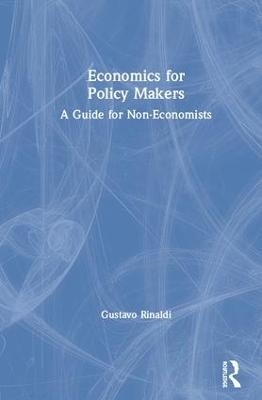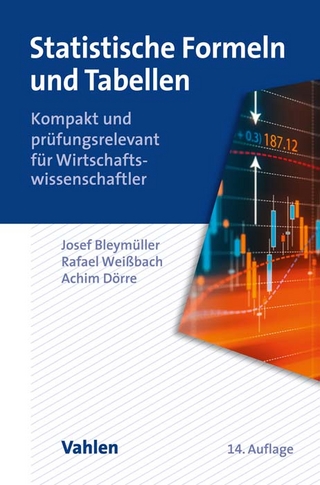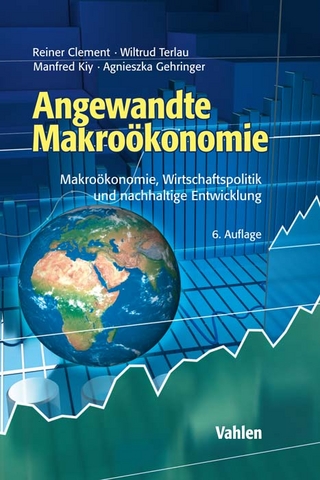
Economics for Policy Makers
Routledge (Verlag)
978-1-138-38880-2 (ISBN)
Certain key economic decisions taken by organizations and indeed countries are often not made by economists but by businessmen, trade unionists, politicians and policy-makers. Those who employ people, those who represent workers, those who make laws and those who elect them need economics but may have little time or desire to study it.
This book makes economics easily available to everyone. The author’s use of simple language and avoidance of technical jargon provides non-economists with a better understanding of economic reasoning and the tools "to know and to decide". The author achieves this through introducing key concepts in short presentations and arming the reader with selected press articles and recent research using these concepts. An analysis of these demonstrates how a general concept can be derived from a specific context and highlighted questions provide the basis for further debate. The reader can then focus on the parts most relevant to their own needs.
This book will have great appeal to employers, trade unionists and public officials attending courses organized by international institutions, professional training providers, as well as graduate students of courses where economics is an important element, especially in relation to its policy implications. Finally, it is invaluable for anybody who has wanted to learn the basics of practical economics but has been deterred by its technicalities.
Gustavo Rinaldi, Ph.D., is a lecturer in macroeconomics at the University of Turin, Italy, and an ILO consultant.
Foreword
Acknowledgments
MICROECONOMICS
Part I INTRODUCTION
Chapter 1 ECONOMIC PROFIT
1.1 The Value of the Best Foregone Alternative: The Opportunity Cost
1.2 Sunk Costs vs Recoverable Costs
1.3 Accounting Profit
1.4 The Economic Profit: Comparing Two Scenarios
1.5 Different Objectives of the Firms
Chapter 2 VALUE ADDED
2.1 Intermediate Consumption and Value Added
2.2 Value Added and Vertical Integration
Part II PRODUCTION AND COSTS
Chapter 3 PRODUCTION AND PRODUCTIVITY
3.1 Rigid and Flexible Production Techniques
3.2 The Measurement of Efficiency
3.3 Marginal Productivity
3.4 The Cornerstone of Industrial Negotiations: Unit Labour Cost
Chapter 4 COSTS
4.1 Fixed Costs and Variable Costs
4.2 Marginal and Average Costs
4.3 Types of Costs
4.4 The Supply: Is the Firm Ready to Sell a Certain Quantity? At What Price?
4.5 A Special Cost: The Cost of Using the Market or Transaction Cost
Chapter 5 ECONOMIES OF SCALE
5.1 Reducing the Average Cost of a Firm
5.2 The Causes of Economies of Scale
5.3 The Limits to Economies of Scale
5.4 The Minimum Efficient Size and Concentration
Part III CUSTOMERS AND COMPETITORS
Chapter 6 DEMAND FOR THE PRODUCTS OF AN INDUSTRY AND OF A MONOPOLIST
6.1 An Industry and the Demand for its Product
6.2 Demand and Supply
6.3 Total Revenue and Marginal Revenue
6.4 Price-Elasticity
6.5 The Effects of Income on Demand: Income-Elasticity
6.6 Price Cross-Elasticity: Complements and Substitutes
Chapter 7 MARKET ENVIRONMENTS
7.1 Monopoly
7.2 Perfect Competition
7.3 Oligopoly
7.4 Monopolistic Competition
MACROECONOMICS
Part IV INTRODUCTION TO MACROECONOMICS
Chapter 8 KEY WORDS OF NATIONAL ACCOUNTS
8.1 Supply (Sources) of Goods: Production (GDP) and Imports
8.2 Uses of Goods: Household Consumption, Private Investment, Government
Spending and Export
Chapter 9 MONEY AND PRICES
9.1 Money and other Financial Assets
9.2 The Demand for and Supply of Money and the Interest Rate
9.3 Money Supply and Prices
9.4 How much inflation is "too much"?
Part V FOREIGN ECONOMIC RELATIONS
Chapter 10 THE FOREIGN TRADE OF GOODS: EXPORTS AND IMPORTS
10.1 The Quality of Goods
10.2 The (Nominal) Exchange Rate and the Exchange Rate Regimes
10.3 The Real Exchange Rate
10.4 The Determinants of Imports
10.5 The Determinants of Exports
Chapter 11 FINANCIAL MOVEMENTS
11.1 Main Types of Financial Movements
11.2 Advantages and Disadvantages of Foreign Portfolio Investments
11.3 Advantages and Disadvantages of Foreign Direct Investment (FDI)
11.4 The Freedom of Movement of Capital
Chapter 12 INTERNATIONAL ACCOUNTS
12.1 The Current Account of the Balance of Payments
12.2 The Capital Account of the Balance of Payments
12.3 The Financial Account of the Balance of Payments
12.4 The International Investment Position (IIP)
Part VI FISCAL POLICY
Chapter 13 MONETARY TRANSFERS: TAXES, BENEFITS, SUBSIDIES AND SOCIAL CONTRIBUTIONS
13.1 General Taxation: Taxes not Earmarked to Fund Specific Expenses
13.2 Earmarked Monetary Transfers Between Private Subjects and Government:
Social Contributions, Pensions and Benefits
13.3 The Macroeconomic Effects of Taxes (and Social Contributions)
Chapter 14 GOVERNMENT SPENDING ON GOODS AND SERVICES
14.1 Public Employment
14.2 Public Procurement
Chapter 15 PUBLIC SPENDING ON EDUCATION, TRAINING, RESEARCH AND DEVELOPMENT (R&D)
15.1 Education and Training
15.2 Public Expenditure in R&D
15.3 Government Expenditure in Education and R&D and its Macroeconomic Effects
Chapter 16 PUBLIC DEFICIT AND PUBLIC DEBT
16.1 The Public Budget and the Public Deficit
16.2 The Public Debt and the Market for Sovereign Bonds
16.3 The Sustainability of a Public Debt
Part VII PRIVATE DEMAND
Chapter 17 HOUSEHOLD CONSUMPTION: THE MAIN DESTINATION OF
GOODS AND SERVICES
17.1 The Main Features of Household Consumption
17.2 The Determinants of Consumption
17.3 Disposable Income Which is not Consumed: Savings
Chapter 18 PRIVATE INVESTMENT: SUPPLYING THE PRIVATE SECTOR WITH
NEW CAPITAL
18.1 The Net Present Value (NPV) Method for Firms’ Investment Decision
18.2 The Main Features of Investment
Part VIII THE LABOUR MARKET AND INEQUALITY
Chapter 19 THE LABOUR MARKET
19.1 A Basic Description of Labour Market Stocks and Flows
19.2 Key Indicators of the Labour Market (KILM)
19.3 The Determinants of Salaries
19.4 Economic Growth and Unemployment
19.5 Unemployment and Prices
Chapter 20 INCOME DISTRIBUTION AND ITS EFFECTS
20.1 The Nature of Inequality
20.2 The Change of Inequality and its Effects
20.3 Causes of and Remedies for Inequality
APPENDIX – INDEXES OF COMPETITIVENESS
A) Global Competitiveness Index (GCI)
B) World Competitiveness Ranking (WCR)
C) Doing Business Indicators (DBI)
D) Discussion
Index
| Erscheinungsdatum | 07.05.2019 |
|---|---|
| Zusatzinfo | 35 Tables, black and white; 44 Illustrations, black and white |
| Verlagsort | London |
| Sprache | englisch |
| Maße | 156 x 234 mm |
| Gewicht | 657 g |
| Themenwelt | Wirtschaft ► Allgemeines / Lexika |
| Wirtschaft ► Volkswirtschaftslehre ► Makroökonomie | |
| Wirtschaft ► Volkswirtschaftslehre ► Mikroökonomie | |
| ISBN-10 | 1-138-38880-7 / 1138388807 |
| ISBN-13 | 978-1-138-38880-2 / 9781138388802 |
| Zustand | Neuware |
| Informationen gemäß Produktsicherheitsverordnung (GPSR) | |
| Haben Sie eine Frage zum Produkt? |
aus dem Bereich


